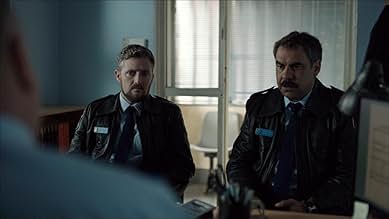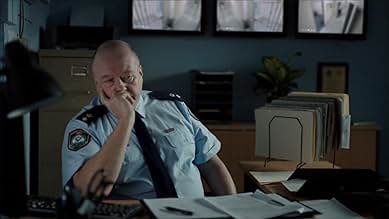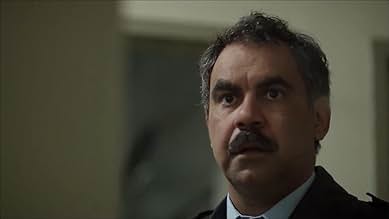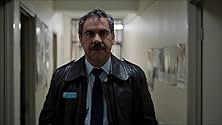Adicionar um enredo no seu idiomaThe troubled lives of struggling indigenous Australians in the tough, rundown neighborhood of the inner suburb of Redfern in Sydney.The troubled lives of struggling indigenous Australians in the tough, rundown neighborhood of the inner suburb of Redfern in Sydney.The troubled lives of struggling indigenous Australians in the tough, rundown neighborhood of the inner suburb of Redfern in Sydney.
- Prêmios
- 16 vitórias e 16 indicações no total
Explorar episódios
Avaliações em destaque
Maybe one has to be Australian to like this series. But not for anyone who has experienced well executed drama. Having ploughed through 6 of the episodes picked from both series 1 and 2 we won't be watching any more. The basic messages are clearly well intentioned but the dialogue is simple and the scenes so repetitive we kept shouting "OK we've got the message".
The characters have little depth and the endings are mostly predictable after about 10 minutes. If this is the kind of drama that wins awards in Australia, then it is no wonder why the rest of the world views that part of the world as lacking culture. (Just as well the Sydney Opera house can counter that.)
The underlying story is generally good but just doesn't justify 50 minute episodes. Now weave several episodes together giving each story maybe 20 minutes air time and there just could be an interesting poignant mini series.
The characters have little depth and the endings are mostly predictable after about 10 minutes. If this is the kind of drama that wins awards in Australia, then it is no wonder why the rest of the world views that part of the world as lacking culture. (Just as well the Sydney Opera house can counter that.)
The underlying story is generally good but just doesn't justify 50 minute episodes. Now weave several episodes together giving each story maybe 20 minutes air time and there just could be an interesting poignant mini series.
For me, this film brings to consciousness and display why people seek to be individuals. One might call it "walking your talk", Or, not taking a passive voice.
The film's theme takes on an active voice as we watch the words and behaviors of the young student and his support groups. IE, being black means "having sufficient character and self-esteem" not to sing the National Anthem.
Both groups point out ...well, it is only a song.
But, to the young black student, singing it, equals subjectification. A big word for meaning ... being less than someone or something else.
Philosophically, is this not the definition of "individual" and having your own voice.
At first look, it was dispiriting to witness the passive voices of the school's "aboriginal liaison" and the white male who is also part of the governing board. Yet, in a subtle manner, this is a realistic view of our societie4s.
More passive voices
And riding right beneath the main topic is ...what and how are we teaching our youth. To just follow the crowd or to think through life and societal issues?
For me, the film invites, even guides, me to examine the definitive question = what am I willing to stand up for even in the face of alienation and expulsion. How do I teach my kids and grand kids to be "real?"
How about you?
The film's theme takes on an active voice as we watch the words and behaviors of the young student and his support groups. IE, being black means "having sufficient character and self-esteem" not to sing the National Anthem.
Both groups point out ...well, it is only a song.
But, to the young black student, singing it, equals subjectification. A big word for meaning ... being less than someone or something else.
Philosophically, is this not the definition of "individual" and having your own voice.
At first look, it was dispiriting to witness the passive voices of the school's "aboriginal liaison" and the white male who is also part of the governing board. Yet, in a subtle manner, this is a realistic view of our societie4s.
More passive voices
And riding right beneath the main topic is ...what and how are we teaching our youth. To just follow the crowd or to think through life and societal issues?
For me, the film invites, even guides, me to examine the definitive question = what am I willing to stand up for even in the face of alienation and expulsion. How do I teach my kids and grand kids to be "real?"
How about you?
Those expecting bushmen, or didgeridoo, will be very disappointed. Those that don't are in for a treat. The show takes place in Redfern, a poorer part of Sydney, where hundreds of years of intermarriage has made for a lighter skin people, who for whatever reason still are blackfellas in a whitefella world. It's a fine balancing act, brought off with skillful portrayals in the series. Don't expect car chase shoot-um-up action.
Excellent acting with story lines that weave between a number of families who come and go throughout the series. This drama series won numerous Australian awards, and had very favourable reviews by the general Australian population.
Excellent acting with story lines that weave between a number of families who come and go throughout the series. This drama series won numerous Australian awards, and had very favourable reviews by the general Australian population.
Badlandz didn't know what he was talking about. If he knew it's actually worse because oh yea we need another American to comment on the intricate and complicated societal Australian problems that were brilliantly reflected and acted in the series. I love the dialog, the emotional weight between the silences, the pauses, which is distinctly Australian; while some might prefer a 50 min drama filled with clever non- clichéd witty dialogue with Tom-Cruise-facial-contortion-style of acting, normally people don't act this way and I think it's the show's purpose to honestly and realistically portray the multi-facets of contemporary Aboriginal lives in Australia.
Redfern Now is not a procedural. It is not about indigenous vs white Australia. It isn't a series, nor is it entirely episodic.
Redfern Now confused me for a while; its format is different and sometimes challenging. Characters get developed to a certain point and then disappear (although they sometimes then reappear).
Redfern Now is the filmed equivalent of an anthology. These are short stories, compellingly told. The nature of the short story is that it forces us to engage, and care, quickly...and then move to resolution with equal pace and force - the exact opposite of lots of other quality TV - Breaking Bad, Mad Men - which have taught us that the super- long format of TV offers the generosity of time to develop stories and characters.
Yes, it sometimes employs what we recognise as clichés. That's because clichés are sometimes real, and they are always recognisable and immediate devices - pretty handy in the short story format.
The highlight of Redfern Now is the writing. Any story-teller would be proud of the way dialogue is captured here - real, witty, succinct and punctuated with telling silences.
For me, the acting can sometimes be Redfern Now's weak link. The theatre background of some of the actors sometimes makes their performances a little 'big' for the small screen. On the other hand, some performances are extraordinary, with heart, emotion and humour played out simply and beautifully.
There are lots of 'issues' in Redfern Now that signal its roots in urban Aboriginal community and culture, but many of the stories could be about contemporary Australia in any suburb. The challenges of 'belonging' in a multicultural community, where family relationships are changing, where mobility up and down the socio-economic ladder is more slippery than ever, where our notion of identity is challenged, and where the connection between past and future seems stretched to breaking point are challenges we all face. These stories have resonance well outside of not just the Redfern Aboriginal community, but outside the indigenous community entirely.
Each of the six programs (for they aren't really episodes) in the two series produced so far, have clearly been laboured over. The investment of time, skill, love and commitment shines through in a very unique way.
These are showcases of tremendous writing, beautiful production and staging, and generally great acting - from both indigenous and other actors. Redfern Now could easily become a hothouse for the next generation of Australian film and TV stars, on both sides of the camera.
Redfern Now confused me for a while; its format is different and sometimes challenging. Characters get developed to a certain point and then disappear (although they sometimes then reappear).
Redfern Now is the filmed equivalent of an anthology. These are short stories, compellingly told. The nature of the short story is that it forces us to engage, and care, quickly...and then move to resolution with equal pace and force - the exact opposite of lots of other quality TV - Breaking Bad, Mad Men - which have taught us that the super- long format of TV offers the generosity of time to develop stories and characters.
Yes, it sometimes employs what we recognise as clichés. That's because clichés are sometimes real, and they are always recognisable and immediate devices - pretty handy in the short story format.
The highlight of Redfern Now is the writing. Any story-teller would be proud of the way dialogue is captured here - real, witty, succinct and punctuated with telling silences.
For me, the acting can sometimes be Redfern Now's weak link. The theatre background of some of the actors sometimes makes their performances a little 'big' for the small screen. On the other hand, some performances are extraordinary, with heart, emotion and humour played out simply and beautifully.
There are lots of 'issues' in Redfern Now that signal its roots in urban Aboriginal community and culture, but many of the stories could be about contemporary Australia in any suburb. The challenges of 'belonging' in a multicultural community, where family relationships are changing, where mobility up and down the socio-economic ladder is more slippery than ever, where our notion of identity is challenged, and where the connection between past and future seems stretched to breaking point are challenges we all face. These stories have resonance well outside of not just the Redfern Aboriginal community, but outside the indigenous community entirely.
Each of the six programs (for they aren't really episodes) in the two series produced so far, have clearly been laboured over. The investment of time, skill, love and commitment shines through in a very unique way.
These are showcases of tremendous writing, beautiful production and staging, and generally great acting - from both indigenous and other actors. Redfern Now could easily become a hothouse for the next generation of Australian film and TV stars, on both sides of the camera.
Você sabia?
- CuriosidadesDeborah Mailman was nominated for a 2015 Australian Academy of Cinema and Television Arts Award in the Best Lead Actress in a Television Drama category for her role as Lorraine in Redfern Now (2012).
- ConexõesReferenced in The Making of Emu Runner (2018)
Principais escolhas
Faça login para avaliar e ver a lista de recomendações personalizadas
- How many seasons does Redfern Now have?Fornecido pela Alexa
Detalhes
- Data de lançamento
- País de origem
- Central de atendimento oficial
- Idioma
- Locações de filme
- Consulte mais créditos da empresa na IMDbPro
Contribua para esta página
Sugerir uma alteração ou adicionar conteúdo ausente

Principal brecha
By what name was Redfern Now (2012) officially released in India in English?
Responda


























